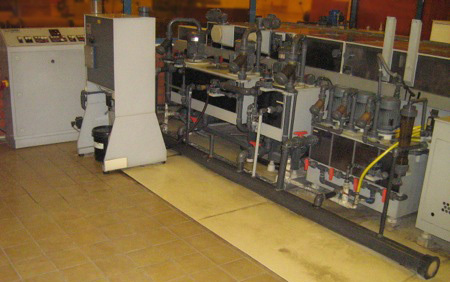Used HOLLMULLER TR ADY / 65 #9014763 for sale
URL successfully copied!
Tap to zoom


HOLLMULLER TR ADY / 65 is a type of photoresist equipment used in printed circuit board (PCB) manufacturing. Photoresists are light-sensitive materials that are used to "print" intricate patterns onto the surface of the PCB. TR ADY / 65 is a single-polymer system that incorporates high resolution and excellent etching characteristics. HOLLMULLER TR ADY / 65 photoresist unit uses a high resolution, two-component dry film resist that is applied to the surface of the PCB. The dry film resist is composed of a photo-sensitive polymeric binder and a photosensitive inorganic pigment. The binder acts as a matrix to bind the pigments and photosensitive molecules together. The pigment provides color and allows for a greater difference between the exposed and unexposed areas of the resist when exposed to light. When applying the dry film resist to the PCB, the surface of the board is also treated with a photoretarder glass to provide a better bond between the resist material and the board's surface. Once the board is coated, the photoresist is then exposed to light using a specialized light machine, such as a Vacuum Photo Image Machine. As the photoresist is exposed to light, the photosensitive molecules in the pigment form a re-crosslinking reaction that causes the exposed regions to become harder and more resistant to etching solutions. This process allows features to be etched with high resolution. The strength of TR ADY / 65 photoresist tool is its excellent etching control. With this asset, it is possible to achieve a wide dynamic range of etch rates as well as lines that are only a few microns wide. This level of control is important for creating precise electronic circuitry. HOLLMULLER TR ADY / 65 photoresist model is an effective and reliable option for Printed Circuit Board (PCB) manufacturing. Its high resolution and excellent etch control abilities allow for precise fine patterning features. To get the best performance from the equipment, careful surface pre-treatment, exposure, and post-bake processes should be observed.
There are no reviews yet